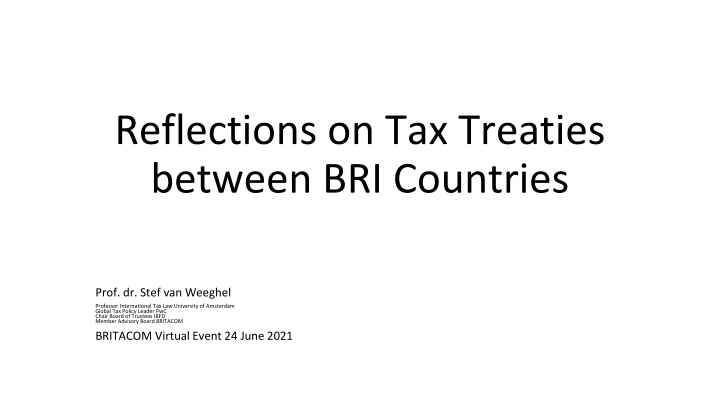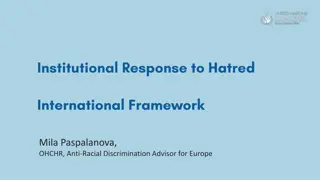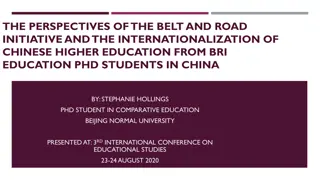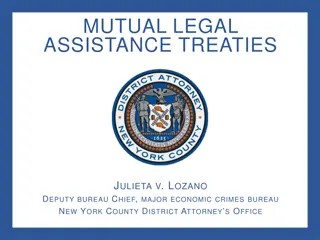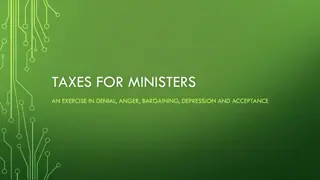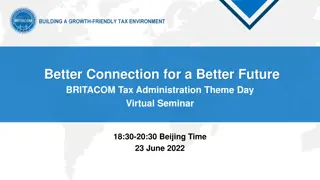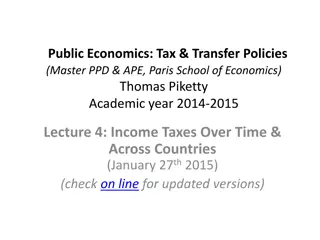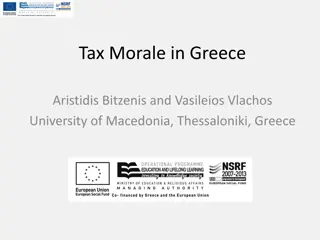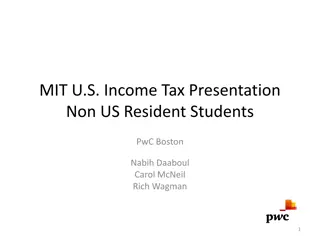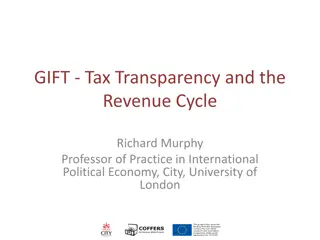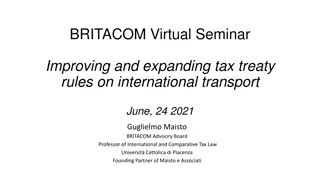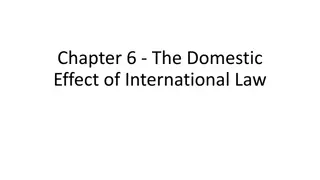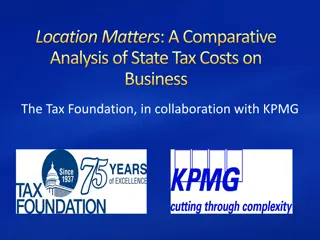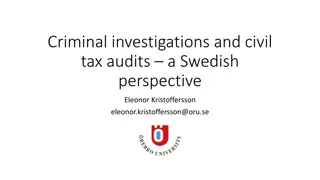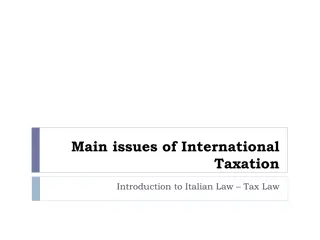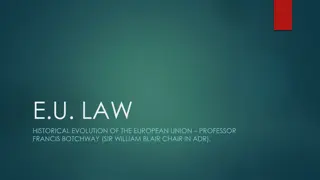Insights into Tax Treaties Among BRI Countries by Prof. Dr. Stef van Weeghel
Delve into the complexities of tax treaties within the Belt and Road Initiative (BRI) as discussed by renowned tax expert Prof. Dr. Stef van Weeghel. Explore the diverse economic profiles, investment statistics, and challenges in negotiating tax agreements among the 140 BRI countries.
Download Presentation

Please find below an Image/Link to download the presentation.
The content on the website is provided AS IS for your information and personal use only. It may not be sold, licensed, or shared on other websites without obtaining consent from the author.If you encounter any issues during the download, it is possible that the publisher has removed the file from their server.
You are allowed to download the files provided on this website for personal or commercial use, subject to the condition that they are used lawfully. All files are the property of their respective owners.
The content on the website is provided AS IS for your information and personal use only. It may not be sold, licensed, or shared on other websites without obtaining consent from the author.
E N D
Presentation Transcript
Reflections on Tax Treaties between BRI Countries Prof. dr. Stef van Weeghel Professor International Tax Law University of Amsterdam Global Tax Policy Leader PwC Chair Board of Trustees IBFD Member Advisory Board BRITACOM BRITACOM Virtual Event 24 June 2021
Overview of BRI: an inclusive project As of January 2021, the number of countries that have joined the Belt and Road Initiative (BRI) by signing a Memorandum of Understanding (MoU) with China is 140. Source: Green BRI Center
Overview of BRI: an inclusive project BRI countries have quite diverse economic profiles, e.g.: Different stages of development Capital importers and exporters Resource rich vs. limited resources Different industries The tax systems and administration are equally diverse, e.g.: No to high corporate taxation Reliance on corporate taxation Developed vs. developing tax administration
Overview of BRI: an inclusive project Between 2013 and 2020, China invested about USD 755 billion in BRI countries Investments reflect BRI diversity, in terms of geographic location and industry sectors Source: Green BRI Center
Tax treaties in the BRI Traditional wisdom: Tax treaties require individual negotiations that consider the situations of each individual treaty partner To date, China has approx. 75/140 BRI treaties Bespoke distributive rules to accommodate the various interests of the parties Withholding rates Taxation of services (art. 12-A) Taxation of the digital economy (art. 12-B) Indirect transfers, resource rich companies PE threshold Credit vs. exemption (...) Impossible to draw overall/one-size-fits-all conclusions (Many) long and winding road(s) ahead
Tax treaties in the BRI Challenge of the traditional wisdom: Provisions of a non-distributive character could be agreed multilaterally Non-discrimination Mutual agreement procedure/dispute resolution EoI and assistance in the collection of taxes Proof of concept /Precedent: Convention on Mutual Administrative Assistance in Tax Matters Aprox. 85 BRI countries are signatories
BRITACOM Mission and Tax Treaties Cooperation and best practices in Facilitate trade and investment Following the rule of law Foster economic growth Raising tax certainty Inclusive and sustainable development Expediting tax dispute resolution Growth-friendly tax environment Improving taxpayer service Enhancing capacity building Carrying out the mission with non-distributive rules? Exchange of information Assistance in the collection of taxes TP (corresponding) adjustment Mutual Agreement Procedure Non-discrimination Art. 26 Art. 27 Art. 9 Art. 24 Art. 25
BRITACOM Mission and Tax Treaties Mutual Agreement Procedure Dispute Resolution Non-Discrimination Equitable treatment of foreign investments Recourse against discrimination and double taxation Restricted scope in tax treaties Restricted scope in tax treaties Backbone of trade and investment treaties Approx. 85 BITs between China and BRI jurisdictions Discussion: design of these measures should consider issues that are sensitive to the different treaty partners - e.g. tax incentives, governance, scope Attention: careful design of interaction with DTTs, BITs, FTAs, ...
Conclusion: a multilateral tax treaty for the BRI? Advantages of the multilateral approach: Faster negotiation Targeted impact (non-discrimination and dispute resolution) Results across multiple jurisdictions (i.e. also between other BRI jurisdictions) Platform for future cooperation and development Potential pathway for fully fledged multilateral tax treaty with opt-in/opt-out mechanism for distibutive and other rules
